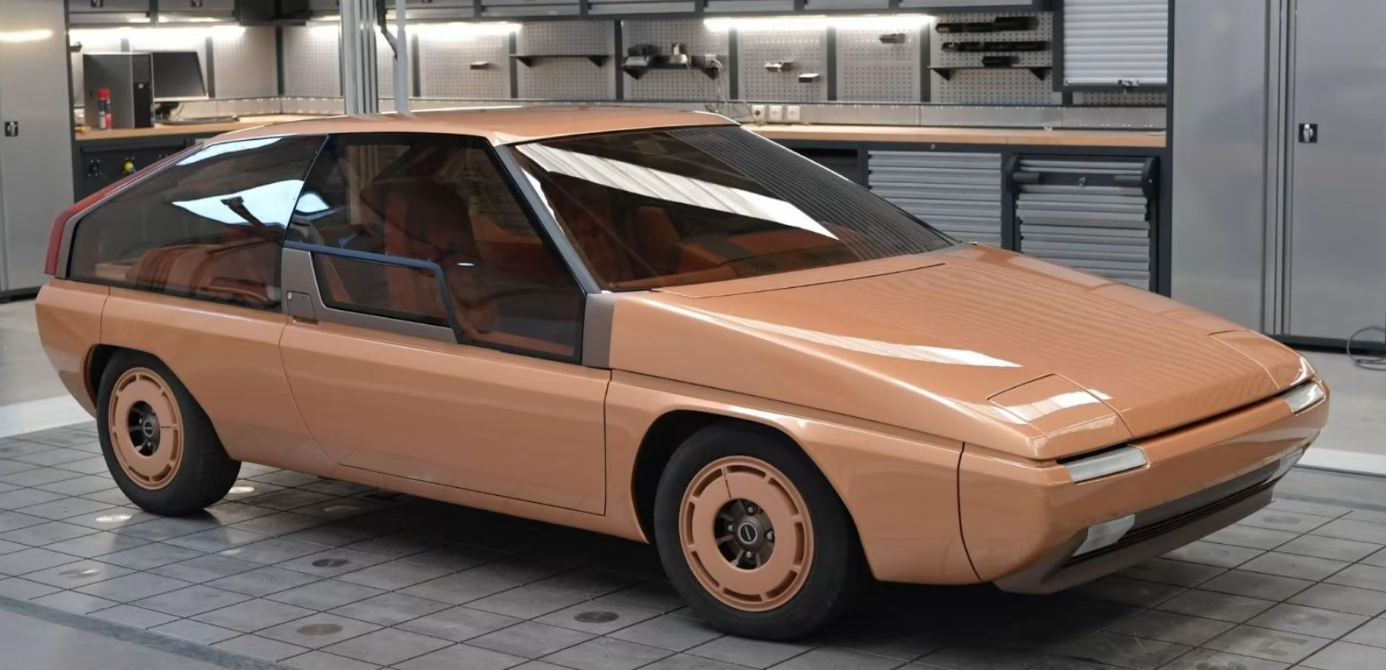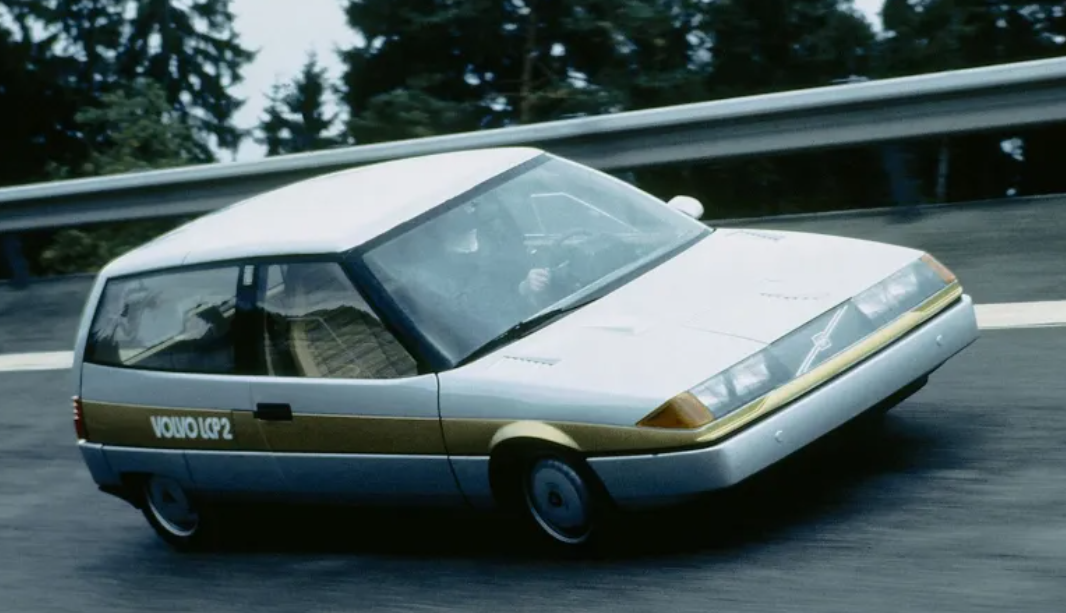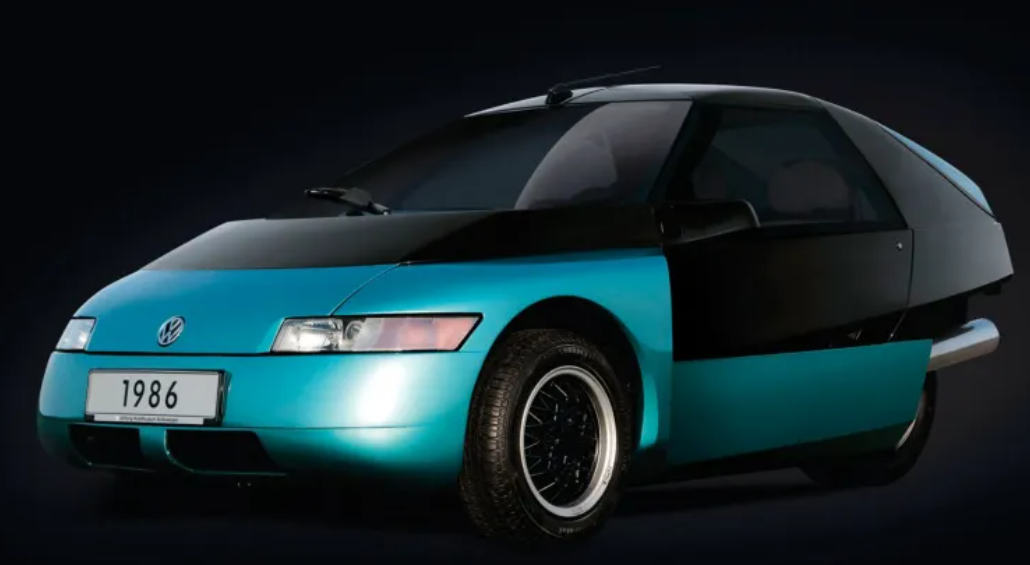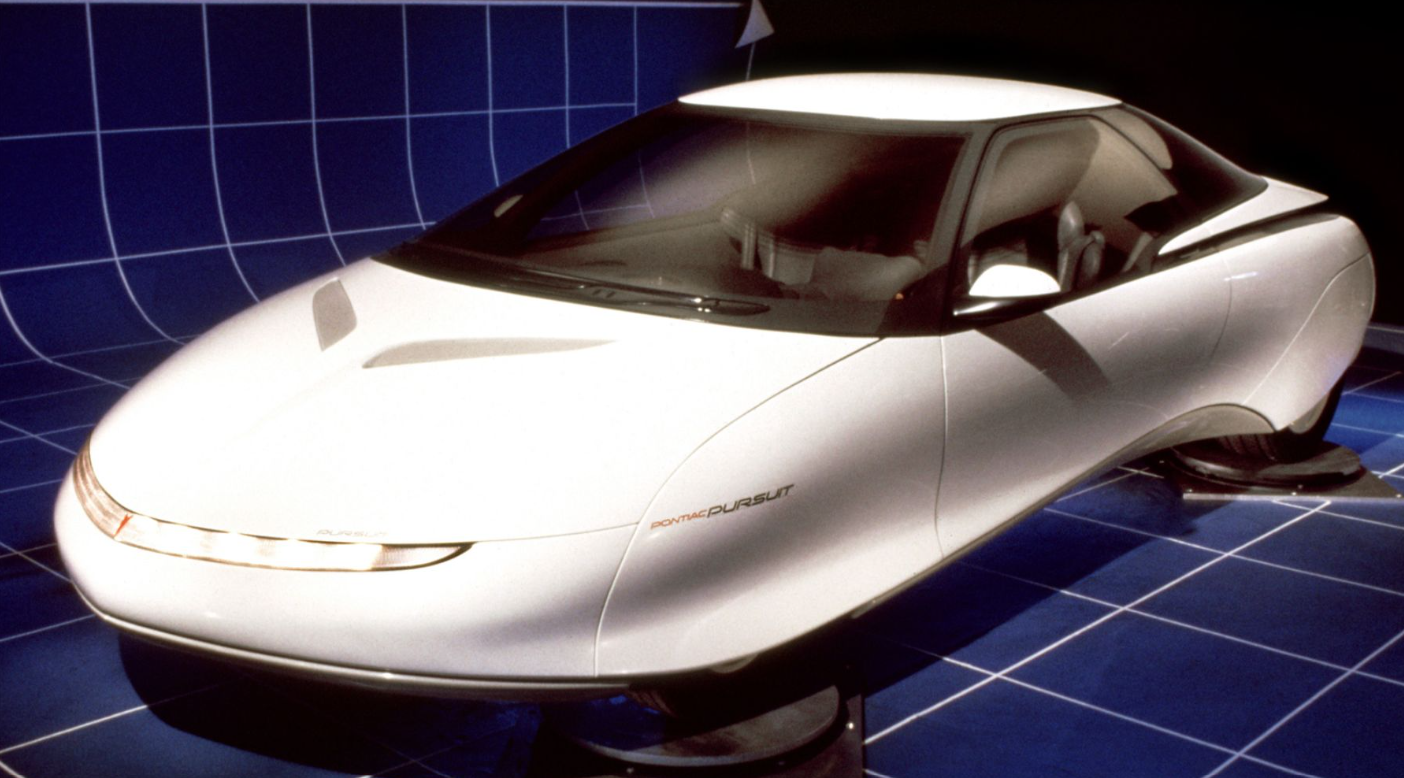5 Fascinating High-Tech Concept Cars of the 1980s
The '80s was a memorable decade for the automotive industry in terms of design and innovation. Apart from the iconic production cars that were unleashed back then, several carmakers showcased some fascinating high-tech production cars.
During the '70s, an oil crisis and draconian emission regulations put an end to the beloved high-powered muscle cars as the industry began focusing on smaller, more fuel-efficient, yet arguably more boring cars.
However, the '80s marked a revival in terms of creativity. Though high-performance muscle didn't return with the same abundance of choices, the decade saw the introduction of some automotive icons, such as the Ferrari F40, Audi Quattro, BMW M3, and the Buick GNX.
Moreover, the decade saw manufacturers experimenting with high-tech features, which led to some fascinating concept cars like the five we'll remember in this article.
1981 Mazda MX-81 Aria

At the 1981 Tokyo Motor Show, Mazda unveiled an interesting wedge-shaped concept dubbed MX-81 Aria.
Designed by Marc Deschamps of the Turin-based coachbuilder Bertone on the backbones of the mass-produced 323, the MX-81 didn't look drastically futuristic, but it surely was.
The first Mazda car to feature the MX (originally Mazda eXperimental) nameplate, which is now iconic, the concept came with an abundance of high-tech features.
The most notable was a rectangular steering wheel comprised of a belt that retracted into the dashboard, a dual-purpose TV screen that acted as an electronic gauge cluster embedded into the steering wheel, and electronically actuated, rotating front seats for easy access.
The MX-81 Aria was kept by Mazda, and for Valentine's Day 2020, the Japanese carmaker decided to show some love by unveiling the fully-restored concept.
1983 Volvo LCP2000

For much of its history, Volvo has been a leading innovator in automotive safety, giving us features such as the three-point seat belt.
However, with this concept unveiled in 1983, the Swedish carmaker focused on fuel efficiency and unconventional materials that would drastically lower overall weight.
Christened LCP2000, the Light Component Prototype was Volvo's take on the passenger car of the year 2000.
Built from scratch using plastic, aluminum and magnesium, the car had a curb weight of only 1,559 pounds (707 kg). Thanks to its weight, it could reportedly do 56 mpg (5 liters per 100 km) in the city and 81 mpg (3.5 liters per 100 km) on the highway.
Moreover, its aerodynamic body with a drag coefficient of 0.25 to 0.28 allowed it to achieve a top speed of 110 mph (177 kph), despite modest engine optput.
Speaking of which, the LCP2000 was tested with various engines, including a 52-hp 1.3-liter Ricardo turbodiesel inline-three built around a magnesium block and a cast-iron 1.4-liter Elsbett (ELKO) three-cylinder that could run on alternative fuels like low-octane gasoline and sunflower oil.
Regardless of the engine, the LCP2000 used a novel five-speed CVT, one of the first continuously variable transmissions adapted for automotive use.
1985 MG EX-E

The British manufacturer MG went through more downs than ups throughout its history, yet it managed to survive.
Back in the mid-1980s, the brand didn't have any breathtaking cars on offer, but it managed to take car enthusiasts' breaths away with the EX-E concept.
Unveiled at the 1985 Frankfurt Motor Show, the EX-E stunned everyone with its gorgeous looks.
Designed by Roy Axe and Gerry McGovern, the concept was a modern take on a genuine mid-engine sports car.
Built around the MG Metro 6R4 rally car, the EX-E featured a mid-mounted, quad-cam 24-valve V6 that sent 250 hp to all four wheels, as well as plenty of high-tech features.
Among them, the most impressive was an aerodynamically-efficient body comprised of unstressed plastic panels, automatic wipers, and headlights, a four-stage cruise control system, electronic climate control, a digital dash, and a crude version of what we now call a head-up display.
Despite the overwhelmingly positive reaction of the public and the press, the EX-E never made it into production, but it remains one of the most fascinating concept cars of the '70s.
1986 Volkswagen Scooter

Volkswagen rose to prominence with the Type 1 "Beetle," its first production model. By the mid-eighties, the company grew exponentially, but it never gave up on the idea of delivering a people's car.
By that time, the Beetle was replaced with the Golf in all of the important markets. Nevertheless, VW showcased different kind of people's car at the 1986 Geneva Motor Show.
Dubbed Scooter, the concept aimed to give people the perfect combination between the safety of a car and the unique riding pleasure of a motorcycle.
A three-wheeled vehicle, the Scooter featured a high-tech body developed to comply with worldwide safety regulations.
Apart from that, the tiny WV featured an innovative swinging arm rear suspension, removable gullwing doors, and enough interior room for two occupants.
Powered by a small 40-hp inline-four, it was so aerodynamically efficient that it could attain a top speed of over 120 mph (193 kph).
Though it was a fully functional, production-ready vehicle, the Scooter never made it in VW dealerships since management was concerned it would cut into the sales of the Golf.
1987 Pontiac Pursuit

With the exception of the Firebird, Pontiac's production models from the second part of the '80s weren't very impressive.
However, the GM division unveiled one of the decade's most fascinating concepts in 1987.
Called Pursuit, the car blended a futuristic design with high-tech features like few other concepts from the '80s, which is why for us, it's the most intriguing concept of the decade.
Though it was powered by a pretty basic 200-hp turbocharged inline-four, the Pursuit looked more like a spaceship than a 1980s car.
Apart from its impressive design, the car received a long list of high-tech features, including four-wheel electronic steering and an infotainment system that displayed real-time weather updates, satellite-based location updates in the in-dash infotainment system, and an integrated child's seat.
Of course, the Pursuit was just a technological showcase, so there were never any plans for production. Nevertheless, some features pioneered by this stunning concept made their way to production cars several decades later.
During the '70s, an oil crisis and draconian emission regulations put an end to the beloved high-powered muscle cars as the industry began focusing on smaller, more fuel-efficient, yet arguably more boring cars.
However, the '80s marked a revival in terms of creativity. Though high-performance muscle didn't return with the same abundance of choices, the decade saw the introduction of some automotive icons, such as the Ferrari F40, Audi Quattro, BMW M3, and the Buick GNX.
Moreover, the decade saw manufacturers experimenting with high-tech features, which led to some fascinating concept cars like the five we'll remember in this article.
1981 Mazda MX-81 Aria

At the 1981 Tokyo Motor Show, Mazda unveiled an interesting wedge-shaped concept dubbed MX-81 Aria.
Designed by Marc Deschamps of the Turin-based coachbuilder Bertone on the backbones of the mass-produced 323, the MX-81 didn't look drastically futuristic, but it surely was.
The first Mazda car to feature the MX (originally Mazda eXperimental) nameplate, which is now iconic, the concept came with an abundance of high-tech features.
The most notable was a rectangular steering wheel comprised of a belt that retracted into the dashboard, a dual-purpose TV screen that acted as an electronic gauge cluster embedded into the steering wheel, and electronically actuated, rotating front seats for easy access.
The MX-81 Aria was kept by Mazda, and for Valentine's Day 2020, the Japanese carmaker decided to show some love by unveiling the fully-restored concept.
1983 Volvo LCP2000

For much of its history, Volvo has been a leading innovator in automotive safety, giving us features such as the three-point seat belt.
However, with this concept unveiled in 1983, the Swedish carmaker focused on fuel efficiency and unconventional materials that would drastically lower overall weight.
Christened LCP2000, the Light Component Prototype was Volvo's take on the passenger car of the year 2000.
Built from scratch using plastic, aluminum and magnesium, the car had a curb weight of only 1,559 pounds (707 kg). Thanks to its weight, it could reportedly do 56 mpg (5 liters per 100 km) in the city and 81 mpg (3.5 liters per 100 km) on the highway.
Moreover, its aerodynamic body with a drag coefficient of 0.25 to 0.28 allowed it to achieve a top speed of 110 mph (177 kph), despite modest engine optput.
Speaking of which, the LCP2000 was tested with various engines, including a 52-hp 1.3-liter Ricardo turbodiesel inline-three built around a magnesium block and a cast-iron 1.4-liter Elsbett (ELKO) three-cylinder that could run on alternative fuels like low-octane gasoline and sunflower oil.
Regardless of the engine, the LCP2000 used a novel five-speed CVT, one of the first continuously variable transmissions adapted for automotive use.
1985 MG EX-E

The British manufacturer MG went through more downs than ups throughout its history, yet it managed to survive.
Back in the mid-1980s, the brand didn't have any breathtaking cars on offer, but it managed to take car enthusiasts' breaths away with the EX-E concept.
Unveiled at the 1985 Frankfurt Motor Show, the EX-E stunned everyone with its gorgeous looks.
Designed by Roy Axe and Gerry McGovern, the concept was a modern take on a genuine mid-engine sports car.
Built around the MG Metro 6R4 rally car, the EX-E featured a mid-mounted, quad-cam 24-valve V6 that sent 250 hp to all four wheels, as well as plenty of high-tech features.
Among them, the most impressive was an aerodynamically-efficient body comprised of unstressed plastic panels, automatic wipers, and headlights, a four-stage cruise control system, electronic climate control, a digital dash, and a crude version of what we now call a head-up display.
Despite the overwhelmingly positive reaction of the public and the press, the EX-E never made it into production, but it remains one of the most fascinating concept cars of the '70s.
1986 Volkswagen Scooter

Volkswagen rose to prominence with the Type 1 "Beetle," its first production model. By the mid-eighties, the company grew exponentially, but it never gave up on the idea of delivering a people's car.
By that time, the Beetle was replaced with the Golf in all of the important markets. Nevertheless, VW showcased different kind of people's car at the 1986 Geneva Motor Show.
Dubbed Scooter, the concept aimed to give people the perfect combination between the safety of a car and the unique riding pleasure of a motorcycle.
A three-wheeled vehicle, the Scooter featured a high-tech body developed to comply with worldwide safety regulations.
Apart from that, the tiny WV featured an innovative swinging arm rear suspension, removable gullwing doors, and enough interior room for two occupants.
Powered by a small 40-hp inline-four, it was so aerodynamically efficient that it could attain a top speed of over 120 mph (193 kph).
Though it was a fully functional, production-ready vehicle, the Scooter never made it in VW dealerships since management was concerned it would cut into the sales of the Golf.
1987 Pontiac Pursuit

With the exception of the Firebird, Pontiac's production models from the second part of the '80s weren't very impressive.
However, the GM division unveiled one of the decade's most fascinating concepts in 1987.
Called Pursuit, the car blended a futuristic design with high-tech features like few other concepts from the '80s, which is why for us, it's the most intriguing concept of the decade.
Though it was powered by a pretty basic 200-hp turbocharged inline-four, the Pursuit looked more like a spaceship than a 1980s car.
Apart from its impressive design, the car received a long list of high-tech features, including four-wheel electronic steering and an infotainment system that displayed real-time weather updates, satellite-based location updates in the in-dash infotainment system, and an integrated child's seat.
Of course, the Pursuit was just a technological showcase, so there were never any plans for production. Nevertheless, some features pioneered by this stunning concept made their way to production cars several decades later.

